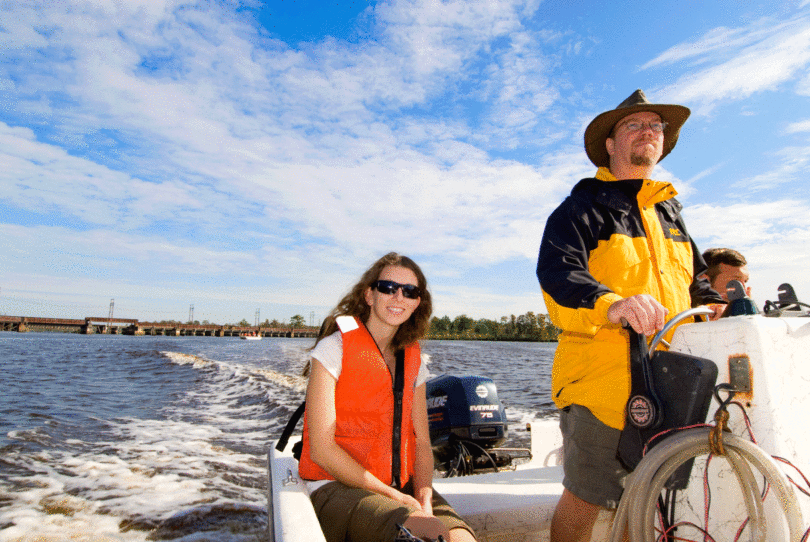Nearly 100 California white sturgeon used in a UGA swimming study could have been tossed in a landfill once the research project ended. Instead, some of the fish are feeding the poor, and others will be wowing visitors at the Tennessee Aquarium.
UGA and the U.S. Fish and Wildlife Service, which funded the research, bucked traditional disposal methods of the sturgeon used for the project by donating 1,900 pounds of fish to the Atlanta Community Food Bank. Three of the live sturgeon that were tested for their swimming abilities also were donated to the Tennessee Aquarium and will be displayed in its River Giants exhibit.
Doug Peterson, an associate professor in the Warnell School of Forestry and Natural Resources, said making sure the fish went to good use after the project ended was a priority for both UGA researchers and the U.S. Fish and Wildlife Service. Normal protocol requires that fish used in aquaculture studies be disposed of in a landfill, but Peterson said because his experiments only tested their swimming ability, the quality of the meat from the fish was completely unaffected by the research.
“We didn’t just want these sturgeon to be thrown out,” he said. “The U.S. Fish and Wildlife Service really wanted to put them to good use, and Inland Seafood was happy to help make that happen.”
Once Peterson completed his research experiments, 95 sturgeon were transported to Inland Seafood, the Atlanta-based distributor that also sells UGA Premium Siberian Sturgeon Caviar.
The UGA-branded caviar was developed from another of Peterson’s projects at Warnell’s Cohutta Fisheries Center, which focused on creating a cost-effective and environmentally sustainable method of farming sturgeon to reduce overfishing of wild sturgeon.
Bill Demmond, chief operating officer at Inland Seafood, said the company was happy to process the sturgeon for consumption, using strict Food and Drug Administration rules. The 1,900 pounds of live sturgeon yielded about 950 pounds of high-quality sturgeon fillets, he said, and at $9.50 per pound, the total value of the donation is $9,025.
“Inland Seafood is happy to have a partnership with both the Atlanta Community Food Bank and the Warnell School of Forestry and Natural Resources,” Demmond said. “We are very pleased the sturgeon project was able to send us the fresh sturgeon so that Inland could process and fillet the fish for donation to the best food bank in the country. “
Bill Bolling, founder and executive director of the Atlanta Community Food Bank, said the sturgeon donation’s protein content is very welcome.
“Protein is one of the most needed items here at the food bank,” he said. “Families struggling to put food on the table mostly opt for canned, nonperishable foods, which are less expensive. Being able to offer fresh fish to our nonprofit partner agencies is wonderful.”
The Tennessee Aquarium will display the three remaining live sturgeon once they are big enough. Currently, they are only about 30 pounds each, said Jackson Andrews, aquarium director of husbandry and operations. The aquarium hopes to display them within a year in the 90,000-gallon tank in the River Giants exhibit, which features freshwater fish that grow to enormous proportions in the wild.
One hundred of the 35-pound sturgeons first were transported to Georgia from a private California fish farm in 2011 for Peterson’s study, which evaluated their swimming performance after the removal of a pectoral fin ray. Researchers commonly use this procedure to obtain a nonlethal bone sample that can be used to determine a fish’s age. After collecting the fin ray, researchers typically release sturgeon back into the water.
Peterson believed this fin ray removal could affect the sturgeons’ swimming abilities and, consequently, their survival. His study focused on a less invasive method that requires a small biopsy of the fin ray rather than the entire appendage. His team currently is analyzing the data, but preliminary results suggest a new fin ray biopsy method is much less invasive, has fewer negative effects on the fish’s swimming ability and that the biopsied tissue actually grows back within about six months.








